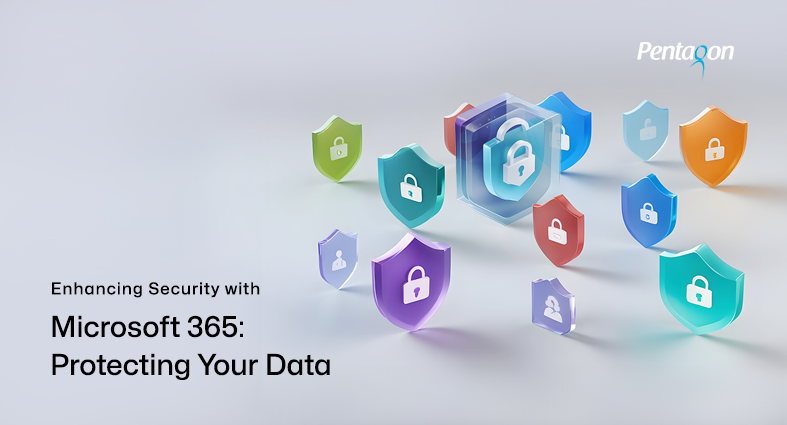The digital age has ushered in unprecedented convenience and connectivity, but it has also brought about a new era of risks and threats. To effectively safeguard your business in the digital age, it’s crucial to comprehend the ever-evolving cyber threat landscape. Cybersecurity has become a paramount concern for businesses of all sizes, as the digital landscape is rife with vulnerabilities that can expose sensitive data and disrupt operations. Cyber threats are not static; they are dynamic and continuously evolving. Hackers and cybercriminals are perpetually refining their techniques to breach defenses. Understanding the nature of these threats is vital for any business. In this article, we embark on a journey through the cybersecurity chronicles, exploring essential strategies and insights to safeguard your business in an ever-evolving digital world.
The Evolving Threat Landscape
Understanding the cyber threat landscape means recognizing that it’s not static; it’s continually evolving. Cybercriminals are constantly devising new tactics and techniques to breach systems and steal data. This evolution is partly driven by the increasing sophistication of hackers, who are often well-funded and highly organized. Moreover, the expansion of the attack surface due to the proliferation of internet-connected devices has given cybercriminals more entry points to exploit. From smartphones and IoT devices to cloud services, every endpoint represents a potential vulnerability. Here are some key aspects:
- Malware Attacks: Malicious software infiltrate systems, often disguised as legitimate software, and can cause data breaches, data theft, or even system shutdowns.
- Phishing: Phishing attacks prey on human psychology. Cybercriminals impersonate trusted entities to trick individuals into revealing sensitive information, such as login credentials or credit card numbers.
- Ransomware: A particularly nefarious form of malware, ransomware encrypts a victim’s data and demands a ransom for the decryption key. Paying the ransom is not advisable, as it doesn’t guarantee data recovery.
- DDoS Attacks: Distributed Denial of Service attacks overwhelm a target’s servers or networks with a flood of traffic, rendering them inaccessible. These attacks can disrupt operations and result in significant financial losses.
- Hacktivism and State-Sponsored Attacks: Hacktivists use hacking as a form of protest or activism, often targeting organizations or entities they oppose. State-sponsored attacks, on the other hand, are orchestrated by governments for political, economic, or military purposes.
- Zero-Day Vulnerabilities: Zero-day vulnerabilities are software flaws unknown to the vendor, making them particularly dangerous. Cybercriminals and state actors often seek and exploit these vulnerabilities before they can be patched, leaving systems vulnerable.
- The Dark Web and Underground Markets: Cybercriminals often operate on the dark web, a hidden part of the internet not indexed by search engines.
- Mobile Device Vulnerabilities: Vulnerabilities in mobile apps and operating systems are exploited for various purposes, including data theft and espionage.
- The Internet of Things (IoT): The IoT has brought convenience and connectivity into our homes and workplaces, but it has also introduced new security challenges.
Building Strong Digital Fortifications
Building strong digital fortifications through the implementation of robust security measures is not an option; it’s a necessity in today’s cyber threat landscape. Just as a medieval castle relied on solid walls, vigilant guards, and clever strategies to withstand sieges, your business must rely on firewalls, intrusion detection systems, regular software updates, data encryption, and two-factor authentication to safeguard your digital assets. These measures collectively form a formidable defense that can repel even the most determined cyber attackers, ensuring the security and integrity of your digital domain. Implementing robust security measures is the foundation upon which digital fortifications are built. It’s akin to fortifying the walls of a castle to withstand relentless assaults. Let’s delve deeper into the specifics of implementing these security measures.
Firewalls and Intrusion Detection Systems (IDS)
Firewalls and Intrusion Detection Systems (IDS) are the sentinels that guard the gates of your digital realm. These security components play a pivotal role in monitoring and filtering network traffic. Firewalls act as the first line of defense, standing as a barrier between your internal network and the external world. They examine incoming and outgoing traffic, allowing or blocking data packets based on pre-established security rules. Think of them as the gatekeepers who decide who gets in and who’s kept out. Intrusion Detection Systems (IDS), on the other hand, act as vigilant watchmen. They constantly monitor network traffic for signs of suspicious or malicious activity. If something unusual is detected, an alert is triggered, and the security team can investigate further. It’s akin to having security cameras and motion sensors placed strategically around your castle, ready to sound the alarm at the first sign of trouble.
Regular Software Updates and Patch Management
The digital landscape is dynamic, with software vulnerabilities constantly being discovered and exploited by cybercriminals. To stay ahead of the game, it’s crucial to keep all your digital assets up to date. This includes operating systems, software applications, and even firmware on hardware devices. Regular software updates serve as a kind of digital maintenance, fixing known vulnerabilities and strengthening your defenses. Cyber attackers often target outdated software because it’s more likely to have exploitable weaknesses. By regularly applying patches and updates, you effectively close these potential entry points for cyber threats.
Data Encryption
Data encryption is akin to encoding your messages in an ancient, unbreakable code known only to your inner circle. It transforms your sensitive data into an unreadable format for anyone who doesn’t possess the decryption key. Imagine that your castle’s treasure chest holds all your valuable information, but it’s locked with an intricate puzzle that only you and your trusted allies can solve. Even if an intruder manages to breach the outer defenses and gain access to the chest, they’ll find nothing but indecipherable gibberish.
Two-factor authentication (2FA)
Two-factor authentication (2FA) adds a layer of security to your digital kingdom. It requires users to provide two separate authentication factors before gaining access to a system or an account. 2FA ensures that even if an attacker manages to obtain one of these factors, they still can’t breach the digital gates. It’s like having a secret handshake that only trusted members of your inner circle know.
Educating Your Digital Workforce
While technology plays a significant role in cybersecurity, the human element cannot be underestimated. It is the most vulnerable and the most powerful asset. In the age of digital transformation, where virtually every employee interacts with technology daily, it’s imperative to equip your team with the knowledge and skills necessary to fortify your organization’s defenses against cyber threats. The role of employees in ensuring cybersecurity cannot be overstated. They are the gatekeepers to sensitive information, and their actions can either strengthen or weaken the organization’s digital fortifications. The human element of cybersecurity is not merely a cog in the wheel; it is the linchpin upon which the entire cybersecurity ecosystem depends. Now let’s dive into the critical aspect of educating your digital workforce.
Employee Training
One of the keystones of a robust cybersecurity strategy is comprehensive and ongoing employee training. Cyber threats continually evolve, and your workforce must be kept abreast of the latest tactics employed by cybercriminals. Employee training programs should encompass a variety of topics, including:
- Phishing Awareness: Phishing attacks remain one of the most prevalent and successful methods of cyber intrusion. Training should educate employees on how to spot phishing attempts, including deceptive emails, messages, and websites designed to trick them into divulging sensitive information.
- Password Hygiene: Passwords are often the first line of defense against unauthorized access. Employees should be trained in creating strong, unique passwords, and in the use of password managers to securely store these credentials.
- Safe Online Practices: Beyond the workplace, employees should understand the importance of practicing safe online behavior in their personal lives. The habits formed outside of work often carry over into professional settings.
- Incident Reporting: Your employees should know how to report potential security incidents. Encouraging a culture where employees feel safe reporting concerns without fear of retribution is crucial.
- Security Tools: Familiarize employees with the cybersecurity tools and software your organization uses. Ensure they understand how to use antivirus programs, firewalls, and other security software effectively.
Creating a Cybersecurity Culture
Cybersecurity should not be seen as the sole responsibility of the IT department. It’s a collective endeavor that involves everyone within the organization. Creating a cybersecurity culture means ingraining security-conscious thinking into every aspect of your business. This includes:
- Leadership Buy-In: It starts at the top. Leaders must champion cybersecurity initiatives, demonstrating their commitment to the cause. When leaders prioritize cybersecurity, it sends a clear message to the entire organization.
- Regular Communication: Open and regular communication about cybersecurity is essential. Updates on the latest threats, successful security measures, and reminders about safe practices should be ongoing.
- Rewards and Recognition: Consider implementing a system for rewarding employees who excel in cybersecurity practices. Recognition can be a powerful motivator.
- Testing and Drills: Conduct regular cybersecurity drills to test the organization’s readiness for potential incidents. These drills can help identify weaknesses that need to be addressed.
Recognizing Social Engineering Tactics
Social engineering attacks prey on human psychology rather than technical vulnerabilities. They are crafty and manipulative, often exploiting trust and human nature. Ensuring that your workforce is adept at recognizing and resisting social engineering tactics is paramount. Key aspects of recognizing social engineering tactics include:
- Awareness of Manipulation Techniques: Employees should be trained to recognize manipulation tactics used by cybercriminals. This includes emotional appeals, urgency, and exploiting authority figures.
- Skepticism: Encourage a healthy dose of skepticism in your employees’ interactions, particularly in the digital realm. If something seems too good to be true or raises suspicion, it should be thoroughly investigated.
- Verification Protocols: Teach employees to verify the authenticity of requests for sensitive information or actions that seem out of the ordinary. Verifying with a supervisor or through a separate communication channel can thwart social engineering attempts.
- Secure Communication: Emphasize the importance of secure communication channels, particularly when dealing with sensitive information. Employees should be cautious about sharing sensitive data via email or messaging platforms.
Data Protection and Compliance
Businesses, regardless of their size or industry, accumulate vast amounts of sensitive information, from customer data and financial records to intellectual property. Ensuring the security and integrity of this data is not just a matter of good business practice but a legal and ethical imperative. Sensitive information is the lifeblood of many businesses, and it’s also what cybercriminals are relentlessly seeking to exploit. Therefore, securing sensitive information should be a top priority for any organization. Here, we will explore some fundamental aspects of safeguarding your business’s most valuable asset – its data. In this section, we will delve into the critical aspects of data protection and compliance that every business operating in the digital realm should consider.
Data Encryption
Data encryption is a powerful tool in the cybersecurity arsenal. It involves the transformation of data into a format that can only be deciphered with a specific decryption key. Data at rest refers to data that is stored on servers or in databases. Encrypting it ensures that even if someone gains physical or unauthorized access to your servers, the data remains unreadable. Data in transit pertains to data being transmitted over networks. Encrypting it ensures that even if intercepted, the data is useless to anyone without the decryption key. Implementing encryption may sound complex, but many tools and solutions are available to make this process relatively straightforward. It’s a critical step in safeguarding sensitive customer information, financial records, and any other data that your business handles.
Regular Backups
Data loss can occur due to various reasons, not just cyberattacks but also hardware failures, natural disasters, and human error. Regular backups are like an insurance policy for your data. By consistently backing up your data, you can ensure that even if the worst happens, your information remains safe and recoverable. Modern backup solutions are automated, which means they can create regular copies of your data without manual intervention. These backups can be stored both locally and in the cloud for redundancy. The frequency of backups should align with your business’s data generation rate and importance. Critical data may need to be backed up more frequently than less critical information.
Incident Response and Recovery
Incident response and recovery are integral aspects of modern cybersecurity. It’s not a matter of if, but when, your organization might encounter a cyber incident. These incidents can range from data breaches and malware infections to denial-of-service attacks and insider threats. The ability to respond effectively to these incidents can make the difference between a minor disruption and a catastrophic breach. Having a well-prepared incident response team, conducting thorough forensics and investigation, and maintaining effective communication channels can help your organization weather the storm when a cyber incident occurs. When it comes to cybersecurity, preparedness is the key to minimizing damage and recovering swiftly from an incident. Here, we will explore the vital components of being ready for a cyber incident.
Incident Response Team
Your organization should have a dedicated incident response team in place. This team consists of individuals with expertise in various domains, including IT, legal, communication, and management. Their roles and responsibilities are crucial in mitigating the impact of a cyber incident.
- Team Formation: The first step is to establish the incident response team. This team should be well-versed in cybersecurity protocols and should have a clear chain of command.
- Roles and Responsibilities: Each member of the team should have predefined roles and responsibilities. For example, the IT specialist might focus on identifying the breach, while the legal expert ensures compliance with data protection laws.
- Training: Continuous training and simulation exercises are essential to keep the incident response team sharp and ready to tackle emerging threats effectively.
Forensics and Investigation
In the aftermath of a cyber incident, understanding the who, what, and how is critical. This is where digital forensics and investigation come into play.
- Gathering Evidence: Forensics experts collect and preserve digital evidence related to the incident. This evidence can be invaluable in identifying the attacker and understanding the attack vector.
- Analyzing the Breach: Investigators analyze the collected data to reconstruct the incident timeline and uncover vulnerabilities that were exploited.
- Chain of Custody: Maintaining a clear chain of custody for digital evidence is essential to ensure its admissibility in legal proceedings, if necessary.
Communication
Effective communication is crucial during and after a cyber incident. Transparent and timely communication can help mitigate reputational damage and reassure stakeholders, including customers, employees, and regulatory bodies.
- Internal Communication: Within the organization, clear communication ensures that all relevant parties are informed and can take appropriate actions. This includes notifying IT teams to contain the breach and legal teams to assess legal implications.
- External Communication: Externally, you must consider your obligation to inform affected parties. This could involve notifying customers about data breaches or informing the appropriate regulatory authorities as required by data protection laws.
- Public Relations: Crafting a well-thought-out public relations strategy is essential to manage the narrative surrounding the incident. Transparency and a commitment to addressing the issue can help maintain trust with customers and partners.
- Legal Implications: Be aware of the legal implications of your communication. Missteps in communication can lead to legal liabilities, so it’s crucial to consult with legal experts during the process.
Emerging Trends in Cybersecurity
In the dynamic and ever-evolving landscape of cybersecurity, staying ahead of the curve is paramount. With cybercriminals continuously innovating and exploiting new vulnerabilities, businesses must be proactive in adapting to emerging trends to secure their digital assets and maintain their competitive edge.
AI and Machine Learning
The integration of artificial intelligence (AI) and machine learning (ML) into cybersecurity strategies has gained significant momentum. AI and ML algorithms can process vast amounts of data and identify patterns that may elude human analysts. AI-driven cybersecurity systems can:
- Threat Detection: AI algorithms can analyze network traffic, system logs, and user behavior to detect anomalies that might indicate a cyberattack. They can identify patterns associated with known threats and even recognize previously unseen attack vectors.
- Automated Response: When a potential threat is identified, AI-powered systems can take immediate action to mitigate the risk. This might involve isolating affected systems, blocking malicious traffic, or alerting cybersecurity teams.
- Predictive Analysis: AI can also predict potential vulnerabilities and threats based on historical data and current trends. This proactive approach allows organizations to address vulnerabilities before they can be exploited.
Cloud Security
As businesses increasingly migrate their operations and data to the cloud, cloud security has become a pivotal concern. The cloud offers unparalleled flexibility and scalability, but it also introduces new security challenges. Cloud security encompasses measures and strategies to protect data, applications, and services hosted in cloud environments.
Key aspects of cloud security include:
- Identity and Access Management (IAM): Controlling who has access to cloud resources and ensuring that access is granted on a need-to-know basis.
- Data Encryption: Encrypting data both in transit and at rest to prevent unauthorized access.
- Security Configuration: Ensuring that cloud services and applications are configured securely, with unnecessary services or ports closed to reduce the attack surface.
- Incident Response in the Cloud: Having a well-defined incident response plan that accounts for cloud-specific threats and vulnerabilities.
- Compliance: Ensuring that data stored in the cloud complies with relevant regulations and industry standards.
Cloud security solutions are evolving rapidly to keep pace with the dynamic nature of cloud computing. Businesses should leverage the security features provided by their cloud service providers and consider additional security measures, such as cloud access security brokers (CASBs) and cloud-native security tools.
The Future of Cybersecurity
The digital realm is in a constant state of flux, driven by technological advancements, cybercriminal innovation, and the expanding attack surface. It is crucial to anticipate and prepare for tomorrow’s challenges. As we venture into the future, businesses and individuals must remain vigilant and adaptable in their approach to safeguarding sensitive data and digital assets. Three significant challenges on the horizon demand our attention and proactive response: Quantum Computing and Encryption, Biometrics and Authentication, and the Intersection of Cybersecurity with Artificial Intelligence (AI).
Quantum Computing and Encryption
Quantum computing is poised to revolutionize computing power, enabling machines to perform complex calculations at unprecedented speeds. While this presents exciting possibilities for various industries, it also poses a significant threat to traditional encryption methods. Currently, encryption relies on mathematical problems that would take classical computers an impractical amount of time to solve. However, quantum computers could potentially crack these encryption codes with ease, rendering many existing security measures obsolete. To address this challenge, the cybersecurity community is actively researching and developing quantum-resistant encryption algorithms. These algorithms are designed to withstand attacks from quantum computers, ensuring that data remains secure in a post-quantum world.
Biometrics and Authentication
Biometrics, such as fingerprint recognition, facial recognition, and retinal scans, are rapidly gaining traction as reliable authentication methods. These technologies offer a more secure and convenient way to verify identity compared to traditional password-based systems. However, they also present unique challenges. Biometric data, once compromised, cannot be changed like a password. Therefore, securing biometric data and implementing robust authentication processes are critical. In the future, we can anticipate the integration of multiple biometric factors for enhanced security. This may involve combining fingerprint and facial recognition or even introducing behavioral biometrics, such as typing patterns and voice recognition. The challenge here lies in ensuring that these systems are not only secure but also privacy-conscious, respecting individuals’ rights and protecting against spoofing attempts.
Cybersecurity in AI
The rise of artificial intelligence (AI) is transforming various industries, but it also has profound implications for cybersecurity. On one hand, AI can be a powerful tool for identifying and mitigating cyber threats in real time. It can analyze vast datasets to detect anomalies, predict potential attacks, and respond with lightning speed. Malicious actors can leverage AI to automate attacks, craft convincing phishing emails, and exploit vulnerabilities at a scale previously unimaginable. To stay ahead of cybercriminals, cybersecurity experts are developing AI-driven defenses capable of countering AI-driven attacks. This involves the creation of AI systems that can detect subtle deviations in behavior patterns, spot previously unknown vulnerabilities, and respond proactively to emerging threats. Moreover, the ethical considerations surrounding AI in cybersecurity must not be overlooked. Striking the right balance between utilizing AI for defense and protecting against AI-driven attacks while respecting individual privacy and civil liberties is a complex challenge that will continue to evolve.
Conclusion
As we peer into the future of cybersecurity, it becomes evident that the landscape is characterized by both promise and peril. By understanding the risks, implementing robust security measures, educating your workforce, and embracing emerging technologies, your business can navigate the complex cybersecurity terrain with resilience. Remember, cybersecurity is not just a matter of compliance; it’s an investment in the trust and longevity of your digital enterprise. Stay vigilant, stay informed, and stay secure. Ready to turn your online presence into a digital masterpiece? Unleash Digital Marketing Services. Don’t wait, let’s chat and craft a bespoke strategy tailored just for you. Contact us today for a free consultation and let’s chart a path to your digital success!
services
Feel free to send us a message.
Please, share your thoughts, and let's chat over a cup of tea.


















